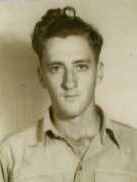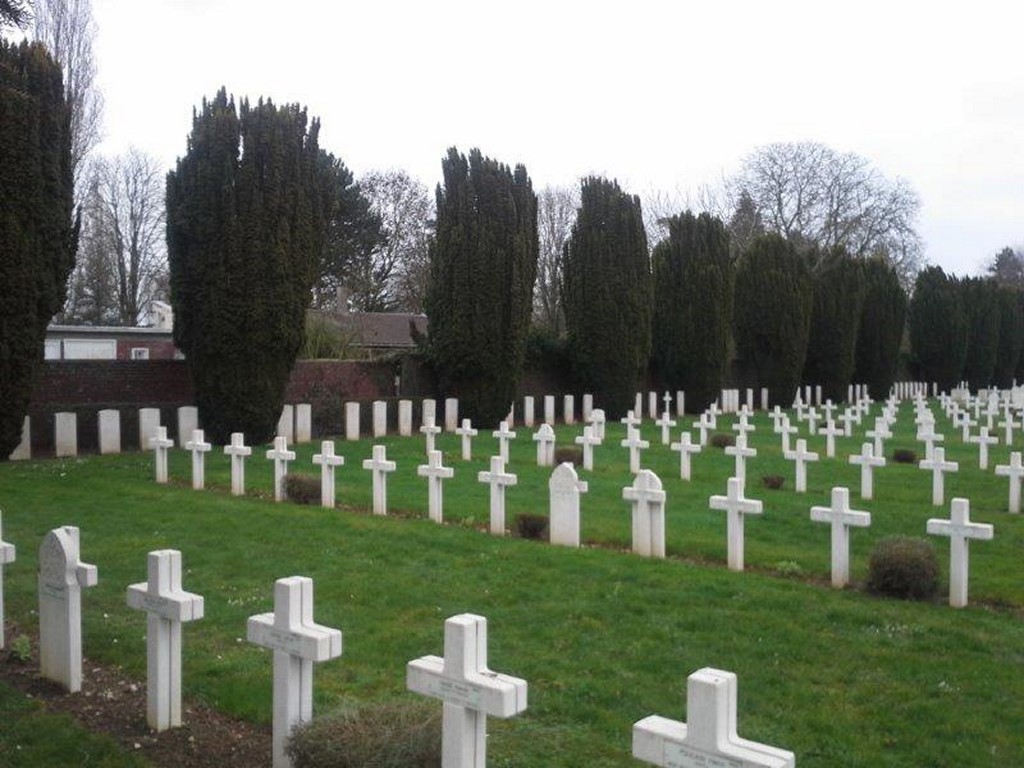Flight Sergeant Nigel Campbell, the son of Walter Campbell and Jessie Campbell (nee Burns), was born at Toowoomba in Queensland on 6th January 1923. He was educated at the East State School to Queensland Scholarship standard and then attended the Toowoomba Boys’ Grammar School. At the age of 17 years, he attended the Marconi School of Wireless in Sydney for four months. He applied for aircrew training in the Royal Australian Air Force on 24th December 1941. He was enrolled in the Reserve of the R.A.A.F. on 30th December 1941 after swearing an oath of allegiance and he was awarded Reserve Badge No. 2538.
Flight Sergeant Nigel Campbell, at the age of 19 years and 6 months, was enlisted into the Citizen Air Force of the R.A.A.F. at No. 3 Recruiting Centre in Brisbane on 20th July 1942 and allotted the service number of 426774 after giving commitment that he would serve for the duration of the war and an additional twelve months. Prior to his enlistment he was employed as a Clerk with the National Oil Pty Ltd at Glen Davis in New South Wales. His physical description at the time of his enlistment was that he was 6 feet in height and weighed 144 pounds. He had a medium complexion, brown eyes and auburn hair. He stated that he was of the Church of England religion. He gave his next of kin as his father, residing at 16 Margaret Street, Toowoomba.
Flight Sergeant Nigel Campbell joined No 3 Initial Training School at Sandgate in Queensland on 20th July 1942. He joined No. 30 Pilots Course at No. 5 Elementary Flying Training School at Narromine in New South Wales on 4th November 1942. Upon completion of his course at Narromine he joined No. 8 Service Flying Training School at Bundaberg in Queensland on 16th January 1943. He qualified as a pilot on 3rd May 1943 and was awarded the Flying Qualification Badge. He was promoted to the rank of Sergeant at No. 8 SFTS on 6th May 1943. He was transferred to No. 2 Embarkation Depot at Bradfield Park in Sydney on 24th May 1943 to prepare for overseas service.
Flight Sergeant Nigel Campbell embarked from Sydney in New South Wales by sea transport for overseas service on attachment to the Royal Air Force on 25th May 1943. He disembarked from the ship in the United Kingdom on 7th July 1943 and joined the No. 11 Personnel Despatch and Reception Centre at Brighton in Sussex on 9th July 1943. He was transferred to No. 15 (Pilots) Advanced Flying Unit at Royal Air Force Station Leconfield for advanced flying training on 10th August 1943. After completing advanced flying training he was promoted to the rank of Temporary Flight Sergeant on 6th November 1943. He joined No. 20 Operational Training Unit at Royal Air Force Station at Lossiemouth on 23rd November 1943 where he received training for night bombing using Vickers Wellington aircraft. He joined No. 41 Base at Marston Moor in Yorkshire on 7th March 1944 where No. 1652 Heavy Conversion Unit was based. He received training on Halifax bombers with the Conversion Unit during the period 31st March until 31st May 1944. He joined No. 102 Squadron for operational duties on 31st May 1944. No. 102 Squadron carried out bombing raids on Germany. In 1944 it was involved in attacking rail targets in France in preparation for the allied forces’ invasion of France.
Flight Sergeant Nigel Campbell was the Pilot and Captain of No. 102 (Ceylon) Squadron Halifax Bomber LW143 that failed to return to its base at Royal Air Force Station Pocklington in Yorkshire, after it was detailed to attack Blainville Sur Leau in France on 29th June 1944. The Air Ministry notified his father residing at 16 Margaret Street, Toowoomba, that he was missing presumably as the result of enemy action.
Subsequent enquiries revealed that the aircraft was shot down and it crashed near Lyons-La-Foret. Nigel Campbell was one of three crew members buried in the French Military Cemetery at Marissel, Beauvais, France. At the time of his death Nigel Campbell was 21 years of age. Four other crew members were hidden by the Resistance Movement and later removed in a car said to belong to the Belgian Resistance Movement working from Paris. They were betrayed to the Germans and possibly taken to Germany as prisoners. The International Red Cross subsequently received from German sources confirmation of the death of Nigel Campbell and two of his crew. Two unposted letters were found amongst his personal possessions after his death. One was addressed to Miss M. Duval, 6 Lydham Avenue, Rockdale, Sydney, and the other to Master N.D. Hatton, 146 Mackenzie Street, Toowoomba. His remains now lie at rest in the Marissel French National Cemetery in France.
Flight Sergeant Nigel Campbell’s name is commemorated on Panel No. 120 at the Australian War Memorial in Canberra and locally on the Toowoomba Mothers’ Memorial, the Toowoomba Soldiers’ Memorial Hall Honour Board and the Toowoomba Grammar School WW2 Honour Board. The stained glass memorial window was installed in St Luke’s Church in Toowoomba to honour his memory and that of his brother, William Beauchamp Cameron who lost his life in an aircraft accident
Toowoomba Grammar Archives show that Nigel Douglas Campbell enrolled as a Day Student on 31st January 1937 studying a business course. He left on 15th September 1938. His parent was shown as W. Campbell, 16 Margaret Street, Toowoomba. Whilst at the School he was a member of the Library Committee in 1938. After leaving school he obtained employment as a Clerk in Toowoomba.
Toowoomba Grammar School Magazine in 1946 published his photo and the following obituary.
Flight Sergeant Nigel Douglas Campbell, elder son of Mrs J. Campbell, of 16 Margaret Street, Toowoomba, and the late Walter Campbell, who was killed over France on June 29th, 1944, at the age of 21 years, attended the School in 1937 and 1938, leaving to take a clerical position in Toowoomba and subsequently going to Sydney. After enlistment in July, 1942, he gained his wings at Bundaberg, proceeded to England in May, 1943, and, after operational training, was posted to 102 Halifax Squadron, R.A.F., with which squadron he took part in raids as captain of a Halifax bomber. On his last operation two of his crew made the supreme sacrifice with him and lie buried with him in the French National Military Cemetery, Marissel, Beauvais, France.




